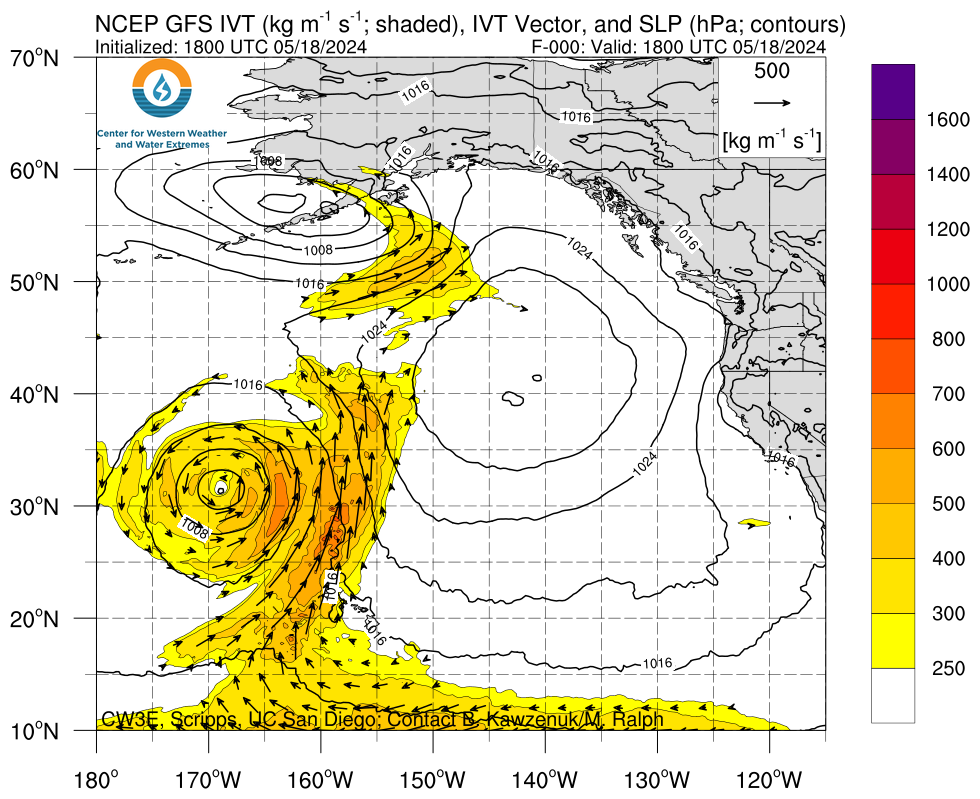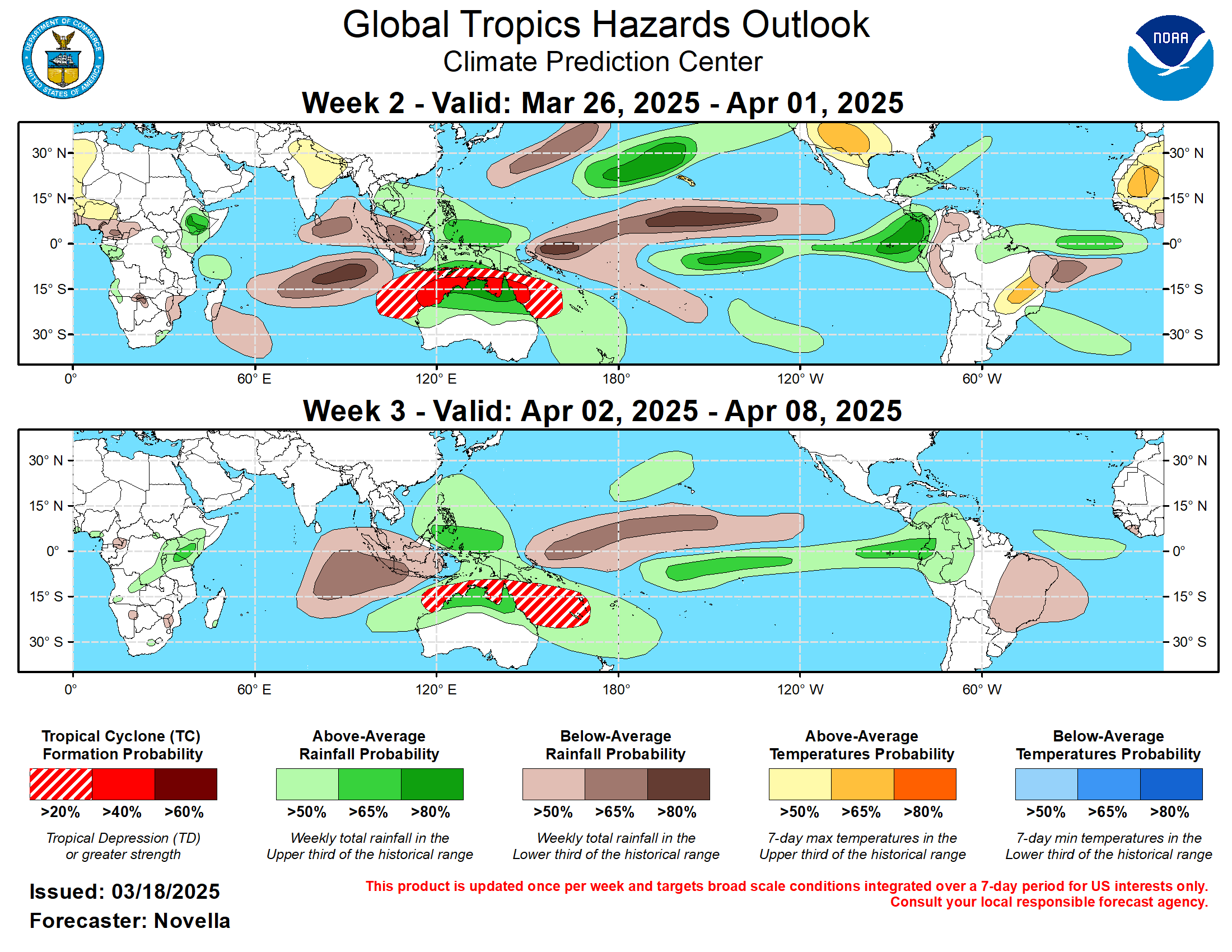This article focuses on what we are paying attention to in the next 48 to 72 hours. The article also includes weather maps for longer-term U.S. outlooks and a six-day World weather outlook which can be very useful for travelers.
First the NWS Short Range Forecast. The afternoon NWS text update can be found here after about 4 p.m. New York time but it is unlikely to have changed very much from the morning update. The images in this article automatically update.
Short Range Forecast Discussion
NWS Weather Prediction Center College Park MD
Fri Jun 21 2024
Valid 12Z Fri Jun 21 2024 – 12Z Sun Jun 23 2024…Record hot temperatures continue over portions of the Midwest/Ohio
Valley while expanding over the Mid-Atlantic……Heavy rain and flash flooding concerns across the Upper Midwest Friday
and Great Lakes Saturday……Risk for flash flooding in the Four Corners Region Friday…
…Heat building over much of the West heading into the weekend…
A stubborn upper-level high over portions of the eastern to south-central
U.S. will generally remain in place, continuing a heat wave over the
region with the focus for the most intense heat over portions of the
Midwest/Ohio Valley and expanding in the Mid-Atlantic. Forecast
temperatures generally in the mid-90s Friday will rise into the upper 90s
to 100 Saturday in the Mid-Atlantic, with record-tying/breaking
temperatures possible. Heat-related Advisories and Warnings are in place
as these temperatures, when combined with the humidity, will bring heat
index values into the 100-105 degree range, with values as high as 110
possible through the southern Mid-Atlantic on Saturday. Additionally,
overnight low temperatures will remain in the mid-70s for many locations,
at potential record-tying/breaking levels, providing little relief from
the heat overnight. The early arrival of this heat in the Summer season,
persistence over multiple days, and abundant sunshine will aggravate heat
stress on those without reliable air conditioning. Temperatures more
broadly from the East Coast to the central/southern Plains will be in the
low 90s Friday and mid-90s Saturday. Meanwhile, relief continues to the
north of a frontal boundary draped though southern New England, with highs
now mostly in the 70s and low 80s.Meanwhile, areas of showers and thunderstorms will continue along this
frontal boundary to the north of the upper-high, as moisture from the Gulf
flows northward through the Plains and around eastward through the Upper
Great Lakes and into New England. The greatest threat for significant
heavy rainfall will be ahead of a surface wave over portions of the Upper
Midwest as overnight storm complexes help prime the soils Thursday
night/Friday morning ahead of another round of storms expected later
Friday. A Moderate Risk of Excessive rainfall (level 3/4) is in effect
Friday centered on southern Minnesota and adjacent west-central Wisconsin,
northern Iowa, and southeastern South Dakota, where the highest potential
for heavy downpours, several inches of rainfall, and scattered to numerous
instances of flash flooding exists. Additional scattered instances of
flash flooding will be possible more broadly across the Upper Midwest. A
few severe thunderstorms are expected as well, as the Storm Prediction
Center has included a Slight Risk of severe weather (level 2/5) for the
region, extending southwestward into the central Plains and the
northwestward into the central/northern High Plains. Damaging winds, large
hail, and a few tornadoes are all possible. An upper-level shortwave
approaching from the west will help to deepen the frontal wave and push
the system eastward on Saturday, bringing the threat for heavy rainfall to
portions of the Great Lakes southwestward into the Upper Mississippi
Valley. A Slight Risk of Excessive Rainfall (level 2/4) is in place
Saturday as an organized complex of storms is expected to follow the
system eastward, bringing additional locally heavy rainfall and scattered
instances of flash flooding. Some severe thunderstorms will again be
possible with a Slight Risk in place mainly for the threat of damaging
winds.An upper-level trough moving over the Southwest will bring areas of
showers and thunderstorms to the Four Corners Region on Saturday.
Anomalously high moisture spreading into the region from the remnants of
former T.S. Alberto will help contribute to locally heavy downpours and
the threat for flash flooding, with a Slight Risk of Excessive Rainfall in
effect Friday. The focus for storms should shift more into portions of the
Desert Southwest on Saturday, with a lingering threat of some isolated
flash flooding. As this trough moves eastward, a ridge will begin to build
over the West in its wake, bringing and expanding area of hot, above
average Summer temperatures. Forecast highs in the 90s on Friday will soar
into the 100s on Saturday for portions of the Great Basin and central
California Valleys. Heat-related Advisories and Watches have been issued
for the central Valleys south into interior southern California beginning
Saturday. Conditions will also be notably hot over the Desert Southwest on
Friday, particularly over central Arizona where Excessive Heat Warnings
are in place, with highs into the 110s. The noted increasing
moisture/storm chances will help cool temperatures down a few degrees
Saturday. Elsewhere, a couple of waves of low pressure will pass over
portions of the Southeast/Florida as well as south Texas, with daily
thunderstorms chances Friday and Saturday.
To get your local forecast plus active alerts and warnings click HERE and enter your city, state or zip code.
Learn about wave patterns HERE.
Then, looking at the world and of course, the U.S. shows here also. Today we are looking at precipitation.
Please click on “Read More” below to access the full Daily Report issued today.
| Notices: What would you like to learn about? Please provide that to me via the comment section at the end of the article. |
Now more detail on the 48-Hour Forecast (It is a 48 to 72 Hour Forecast actually)
Daily weather maps. The Day 1 map updates twice a day and the Day 2 and 3 maps update only once a day. These maps update automatically. But if that does not happen, you can get updates by clicking HERE
TODAY (or late in the day the evening/overnight map will appear) (Key to surface fronts shown on maps and you will then also be able to insert a city name or zip code and get a local NWS forecast).
TOMORROW
NEXT DAY
We have a new animation of the forecast which shows how things may play out over the next 60 hours. To update click ANIMATION. Doing so will get you to the dashboard. You can then step through the animation or hit LOOP on the upper right of the display. You will have to hit the back arrow ← at the top left on your computer to get back into this article. It is a little more trouble than before but I think NOAA scrapped the animation routine I was using so we have to keep up with “progress”.
The NWS Climate Prediction Center’s: Watches, Warnings, and Advisories plus other information can be found HERE. That takes you to the NWC Severe Weather Site. From there you can select among many categories of information. Remember to hit the back arrow ← at the top left of your screen to return to this article.
ATMOSPHERIC RIVERS
This tells us what is approaching the West Coast. Click HERE to update If I have not gotten around to doing the update. Here is some useful information about Atmospheric Rivers.
Below is the current five-day cumulative forecast of precipitation (Updates can be found HERE)
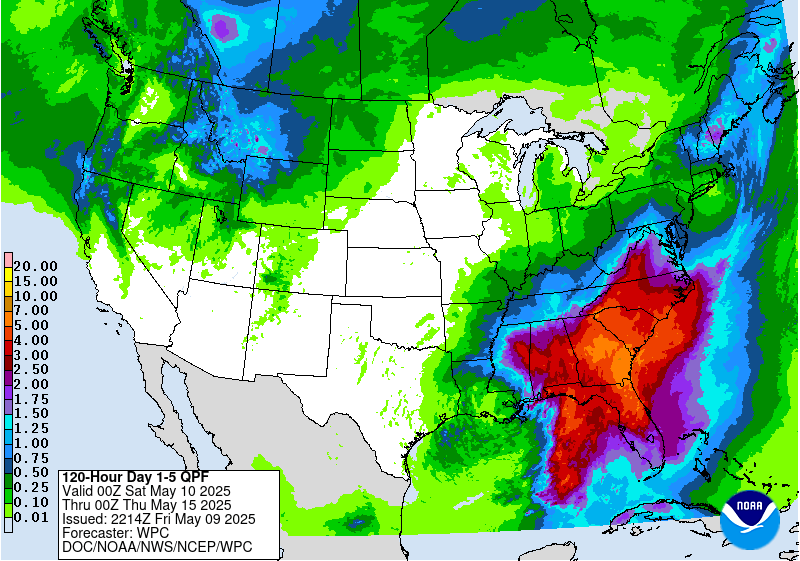
Ski SnowReports will Resume in the Fall.
Now we look at Intermediate-Term “Outlook” maps for three time periods. Days 6 – 10, Days 8 – 14, and Weeks 3 and 4. An outlook differs from a forecast based on how NOAA uses these terms in that an “outlook” presents information as deviation from normal and the likelihood of these deviations.
Below are the links to obtain updates and additional information. They are particularly useful if you happen to be reading this article significantly later than when it was published. I always try to provide readers with the source of the information in my articles. These links may also be useful for those viewing this article on a cell phone or other small screen.
| Days 6 – 10 (shown in Row 1) | Days 8 – 14 (Shown in Row 2) | Weeks 3 and 4 (Shown in Row 3 but updates only on Fridays) |
| https://www.cpc.ncep.noaa. gov/products/predictions/610day/ | https://www.cpc.ncep .noaa.gov/products/predictions/814day/ | https://www.cpc.ncep.noaa.gov/products/predictions/WK34/ |
Showing the actual maps. They should now update automatically. The Week 3 – 4 Outlook only updates on Fridays. So below is what I call the Intermediate-term outlook. On Fridays, it extends out 28 Days. That declines day by day so on Thursday it only looks out 22 days until the next day when the Week 3 – 4 Outlook is updated and this extends the outlook by one additional week.
| 6–
10
|
|
|
| 8–
14 |
|
|
| 3–
4 |
|
|
HAZARDS OUTLOOKS
Click here for the latest complete Day 3 -7 Hazards forecast which updates only on weekdays. Once a week probably Monday or Tuesday I will update the images. I provided the link for readers to get daily updates on weekdays. Use your own judgment to decide if you need to update these images. I update almost all the images Friday Night for the weekend edition of this Weather Report. So normally readers do not need to update these images but if the weather is changing quickly you may want to.
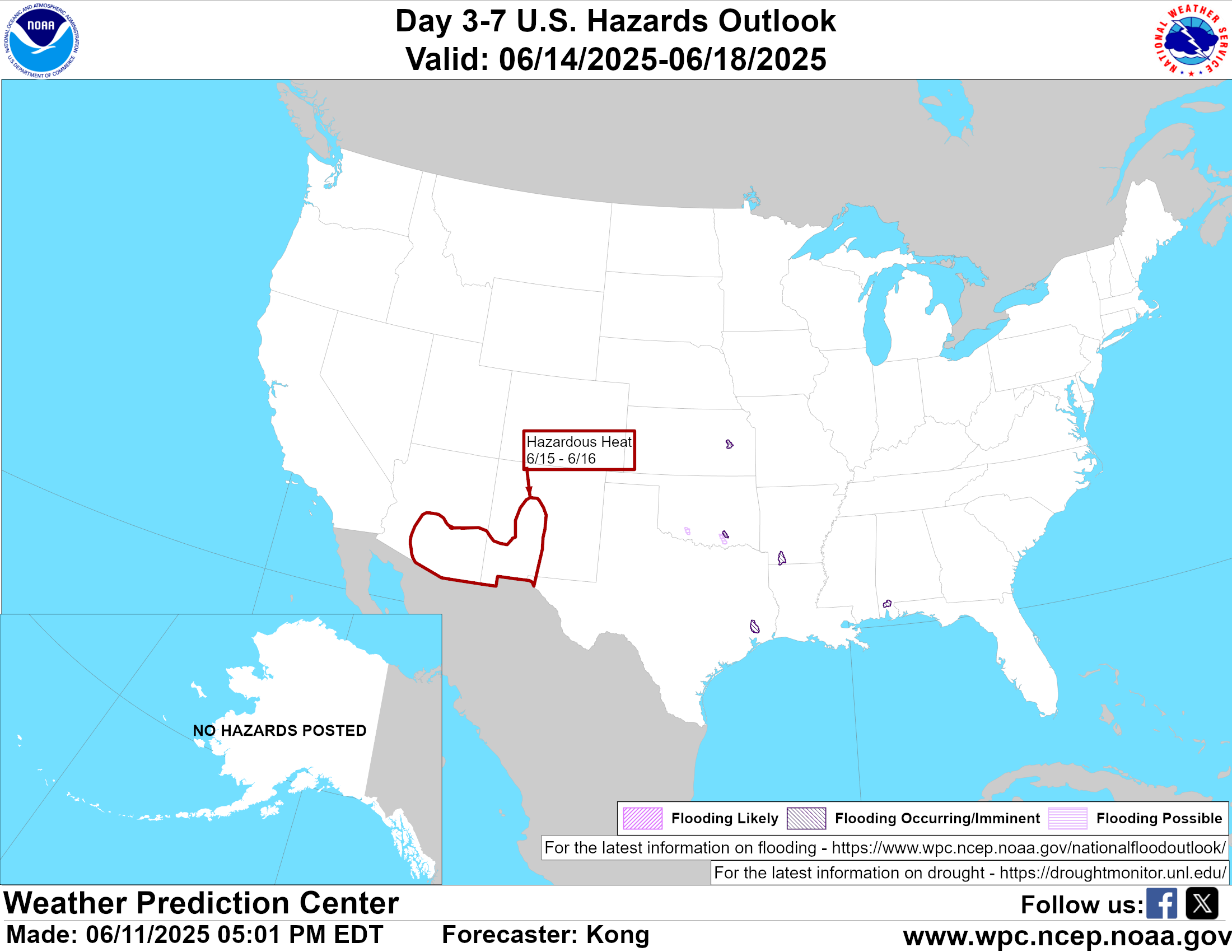
Temperature month to date can be found at https://hprcc.unl.edu/products/maps/acis/MonthTDeptUS.png
Precipitation month to date can be found at https://hprcc.unl.edu/products/maps/acis /MonthPNormUS.png
World Forecast [that website is has been intermittent so be patient]
Below are the Day 1 -3 and 4-6 forecasts for temperature and precipitation. Updates and much additional information can be obtained HERE
World Temperature Anomalies

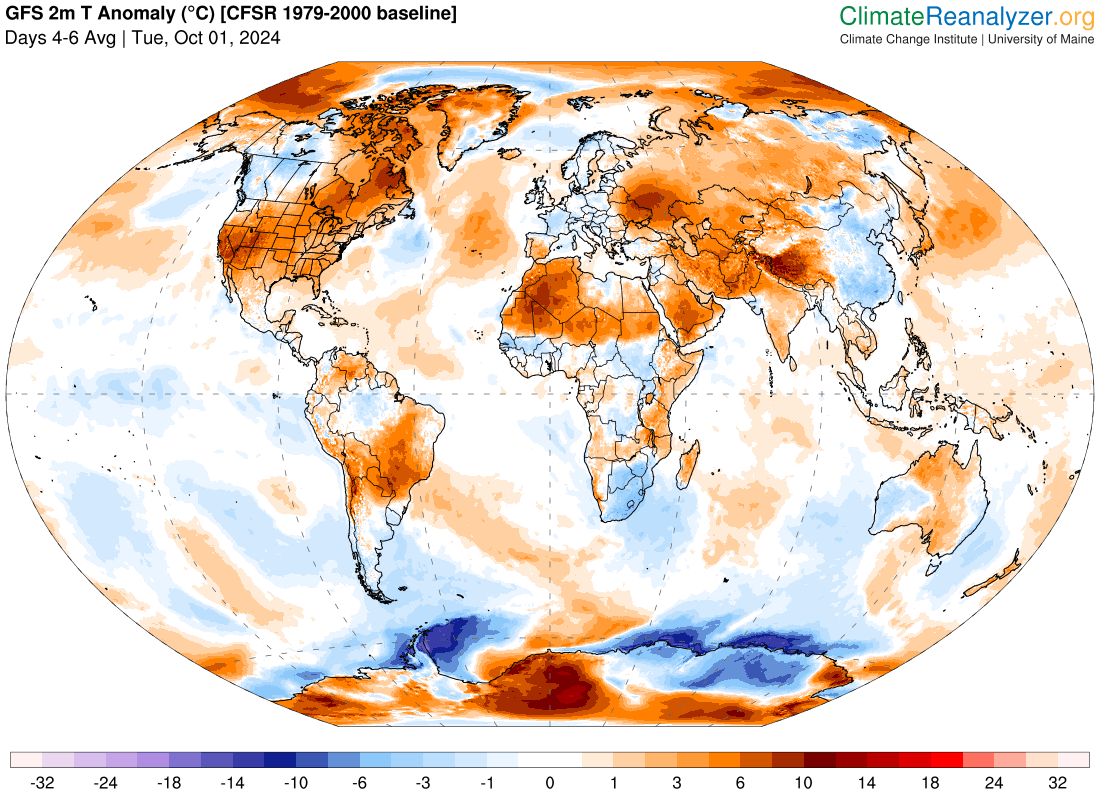
World Accumulated Precipitation
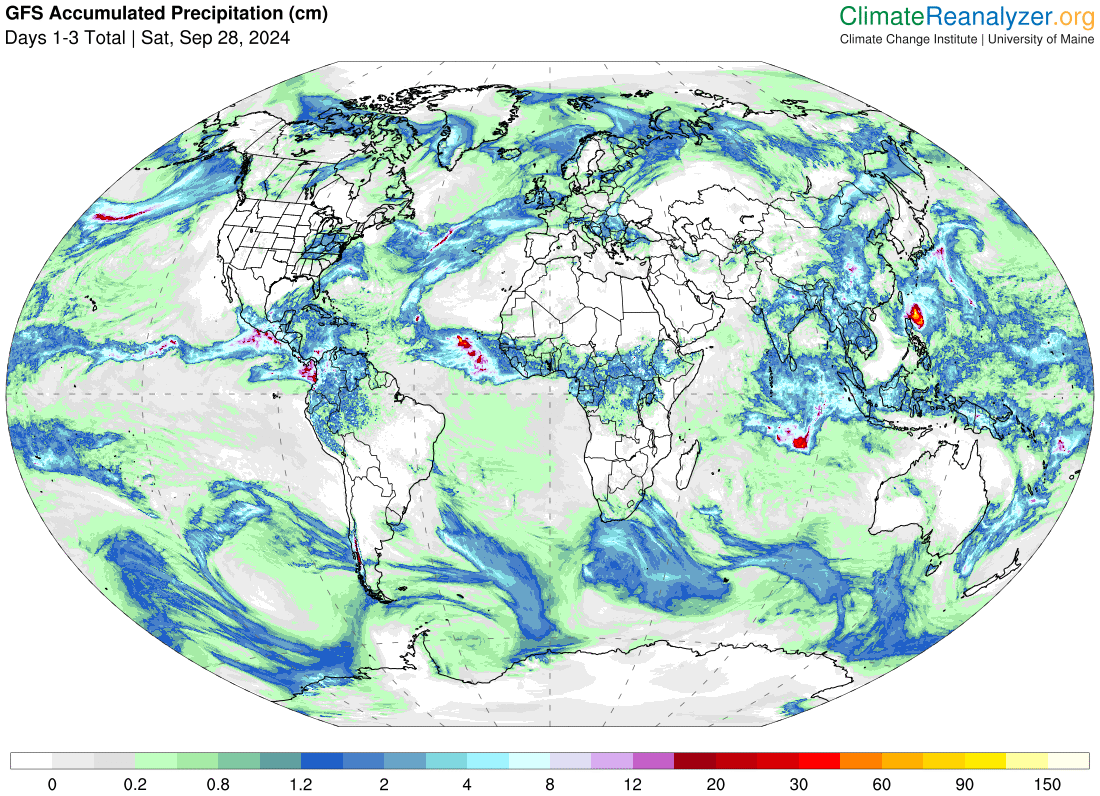

This information is provided by the University of Maine. They draw upon many different sources. There is a lot of information available at the link provided. I have just provided two useful forecasts. There are probably over a hundred different forecasts available from this source.
Worldwide Tropical Forecast (This is a NOAA Product)
This graphic updates on Tuesdays) If it has not been updated, you can get the update by clicking here Readers will only have to do that if they are reading this article much later than the date of it being published.
Information on Tropical Storms can be found HERE. Western Pacific information can be found HERE. Note that unless there is an out-of-season storm the below images will not update until the National Hurricane Center starts their seasonal update of these maps on June 1. I include them simply because there can be an out-of-season event in which case it should show up in these maps.


–
| I hope you found this article interesting and useful. |

